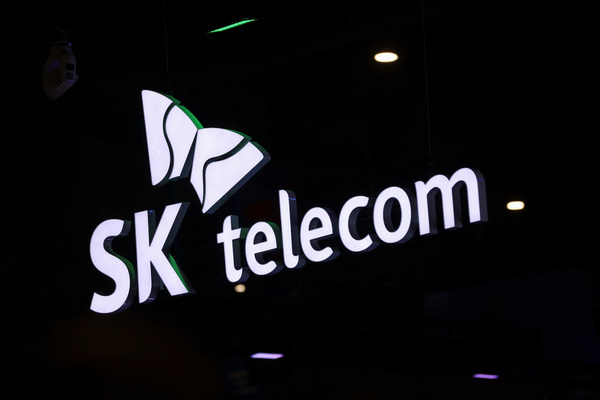The UK expands its 5G supplier approach
Sponsored by Mavenir
A report commissioned by the UK Government has recommended that a portion of the equipment used to build the country’s 5G networks should come from a new breed of infrastructure vendor.
The report was produced by the government’s vendor diversity task force, chaired by ex-BT chief Lord Livingston, and established to examine the country’s over-reliance on just two or three suppliers for the vital 5G mobile network equipment. The situation became even more critical when the government banned Chinese company Huawei from supplying infrastructure in the future and ordered the removal of equipment it had already installed.
Mavenir, a global company with a significant presence and investment in the UK, is one of the new breed of vendors identified within the Livingston report. Mavenir is a leading developer and champion of a new approach to mobile network infrastructure known as O-RAN – or OpenRAN – where the RAN is the radio access network.
Mavenir is also a key member of the O-RAN Alliance, a group led by mobile network operators to establish the standards and principles of the OpenRAN approach. Mavenir has opened an OpenRAN software development centre in Swindon and has a Global Centre of Excellence for the associated technology in its Cambridge facility.
Traditionally, mobile network infrastructure has seen the RAN element of the network using proprietary technology for its underlying core infrastructure. This has led to the situation where one or two vendors could become dominant in the supply chain and effectively close the door on all competition, creating an uneven playing field.
The software-led OpenRAN approach differs significantly. By defining “open” and interoperable interfaces between the key elements of the network, it allows for a much greater diversity of vendors that includes innovative new software companies as well as the existing large hardware players.
The open approach also encourages the use of standard, rather than specialist, hardware and servers. In addition, OpenRAN software also enables easier adoption of cloud or virtualised network technology; this is particularly important because a virtualised approach to network technology is fundamental to delivering against the full capabilities of next generation 5G mobile networks.
While the UK and other national operators were no doubt somewhat inconvenienced by government demands to remove already installed and operational equipment from their networks, they have also been united with governments around the world in their desire to see a much greater diversity of choice when it comes to selecting equipment suppliers. As a result, the OpenRAN approach is attracting significant operator and industry attention.
Indeed, according to the Telecoms Infra Project – a UK-based, Facebook-backed industry group looking to help bring advanced mobile network services into rural or remote areas – there are now some 15 commercial deployments of OpenRAN globally, with a further 50 operator trials also underway. Vodafone UK is one of those 15 network operators already commercially testing OpenRAN.
In a parallel move, Europe’s biggest mobile network operators announced a collaborative effort to test and develop OpenRAN solutions. This is significant as Livingston’s report specifically identifies OpenRAN technology when setting its direction that 5G network infrastructure be sourced from a wider community of vendors. This direction is a key component of the report’s policy recommendations for the UK.
The Livingston report was not the only welcome news for the OpenRAN community in recent weeks. Although initial OpenRAN deployments have often focused on rural or out-of-town locations, Mavenir announced that it had – in partnership with silicon chip vendor Xilinx – successfully completed a demonstration of a technique known as Massive MIMO within a full OpenRAN environment. The demonstration was made to a group of six mobile network operators in Mavenir’s R&D laboratory.
This is important as some vendors were suggesting the absence of massive MIMO technology within OpenRAN was a reason to delay its adoption. Massive MIMO is seen as a route to deliver ultra-high capacity in city centres and closed environments such as stadia or transport hubs.
While OpenRAN represents an alternative approach to boosting capacity, some have suggested it could not match the massive MIMO approach. Mavenir and Xilinx have now shown that OpenRAN can also support massive MIMO, and the two companies will start testing live deployments before the end of this year. This breakthrough shows that OpenRAN can more than match traditional approaches in terms of both capacity and capability.
There’s no doubt that momentum for OpenRAN is building – in terms of government support, operator interest, commercial deployment and technical advances. It also increases the diversity of competition which is known to drive innovation. And it is clear that allowing the supply of critical national infrastructure to remain in the hands of a very small number of suppliers is neither in the national interest, nor in the commercial interests of the mobile operators.
For companies such as Mavenir, the OpenRAN future is beginning to look very bright.
by Stefano Cantarelli, CMO, Mavenir

Business Reporter Team
Most Viewed
23-29 Hendon Lane, London, N3 1RT
23-29 Hendon Lane, London, N3 1RT
020 8349 4363
© 2024, Lyonsdown Limited. Business Reporter® is a registered trademark of Lyonsdown Ltd. VAT registration number: 830519543





